Most of the time, when we knit socks, we tend to knit them from a ball or cake of yarn. But what about when you knit from a sock blank? There are some strategies that can be very helpful if you’re using a sock blank for the first time. I thought it might be helpful to explore them here.
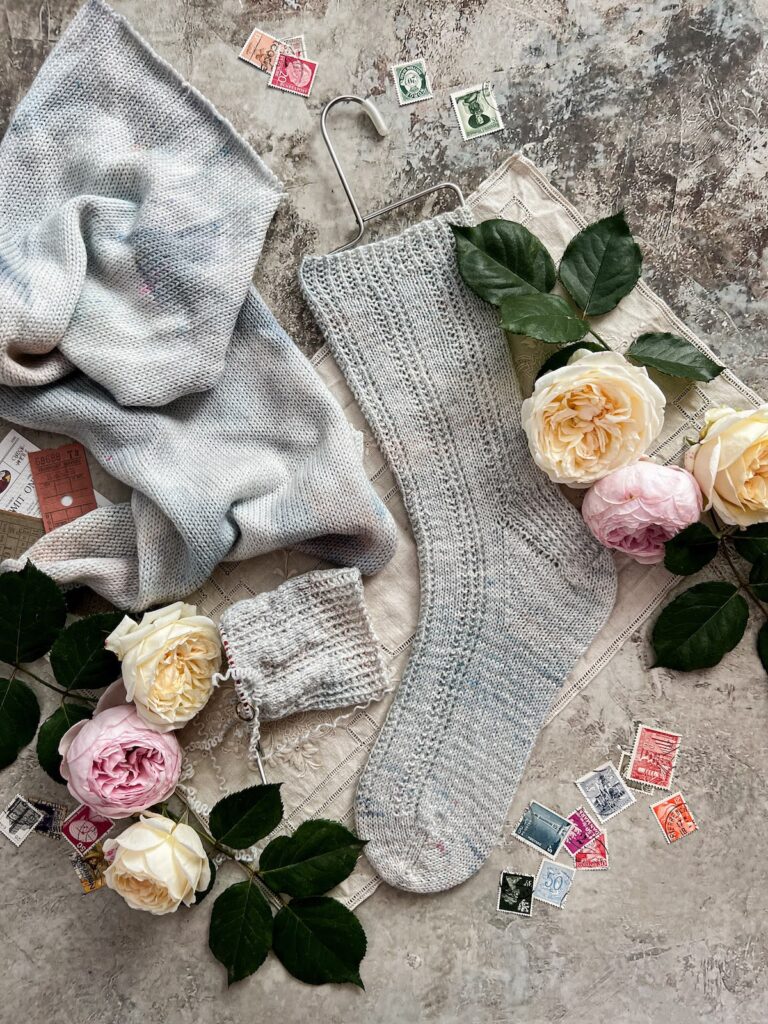
What is a Sock Blank?
A sock blank is a tube or flat piece of yarn that has been up by machine. A dyer dyes the sock blank once it has been knit up. Then, when you were ready to use it, you simply unravel it.
Some sock blanks are double stranded, so that you can make a pair of more or less identical socks. Other sock blanks are knit up single-stranded, which will result in two socks that are coordinated but not perfectly matching.
Usually the listing will tell you what kind of sock blank it is, but when in doubt, contact the dyer.
The blank you’ll see in the photos for this post was dyed by Taralynn of Playful Day Yarns using leftover dye from her hydrangea collection. I love the soft and subtle color variations. Taralynn’s yarn sells out pretty quickly when she posts updates, so if you’d like to snag some of your own, be sure to get on her mailing list (there’s a sign-up spot at the bottom of her homepage).
Benefits of Using a Sock Blank
One of the chief benefits of a sock blank is that it can be dyed up in ways that look different from how a traditional skein of yarn might. It’s much easier to do stripes on a blank, for example. You can also get interesting tie-dye effects when dyeing with a blank. Those effects won’t look the same when you’re dyeing a loose skein of yarn.
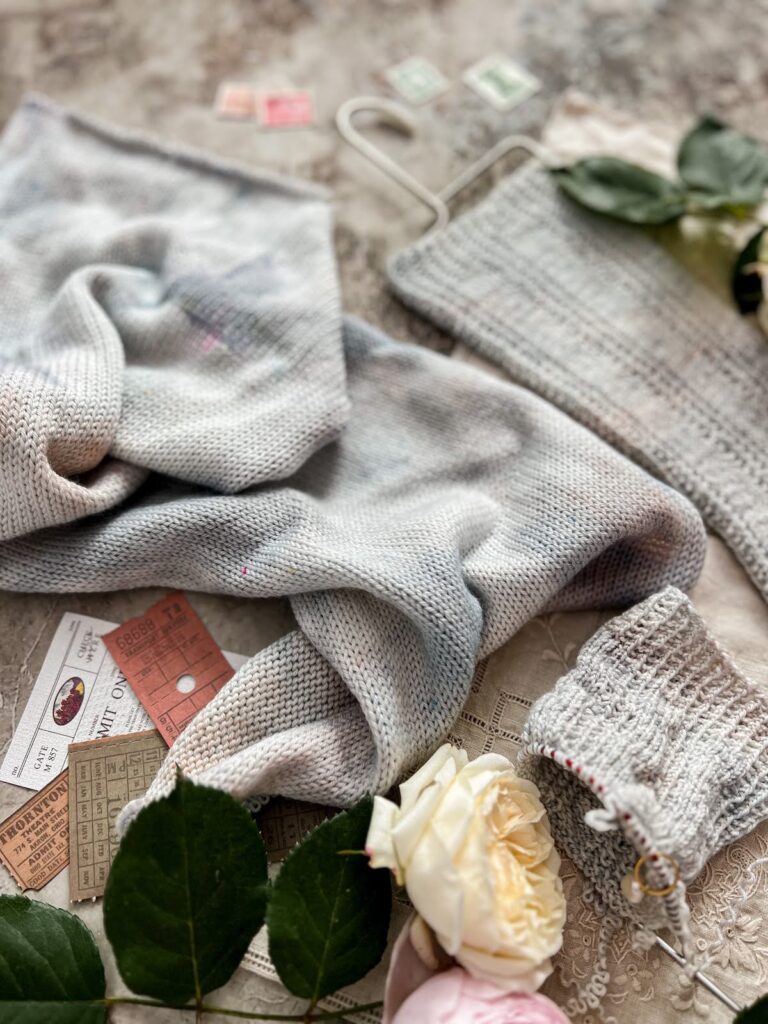
Another benefit is that the sock blank is pretty portable. If you find that your balls of yarn tend to roll away from you, you might enjoy the way a sock blank stays put as you work. It’s not going to fall out of your lap and roll under three rows of airplane seats. (Please tell me I’m not the only one who has nightmares about that every time she gets on a plane.)
Sock blanks are also fun because they are all different. Most of the time, when you buy a sock blank, you’re buying it from somebody who has hand dyed it. That’s because the process of knitting it up into a tube and then dying it doesn’t make economic sense for a lot of commercial yarn companies. If you’re looking for something really special, though, a hand dyed sock blank fits the bill.
Drawbacks to Using a Sock Blank
If you are the sort of person who really struggles with sock pairs that aren’t perfectly symmetrical, making socks from a blank may not be the right call for you. Your socks are almost guaranteed to be imperfectly matched at best. The least matched pairs go all the way to joyfully chaotic.
That’s not really a recipe for comfort if you’re a perfectionist.
Sock blanks might also be a challenge if you have sensory sensitivities. Because the yarn comes out of the sock blank in a highly crimped form, it feels a little weird as it moves across your fingers. The sock, as you work on it, is also kind of lumpy and doesn’t feel as nice in the hand. There are, however, some ways to minimize this issue, which we’ll cover in a moment.
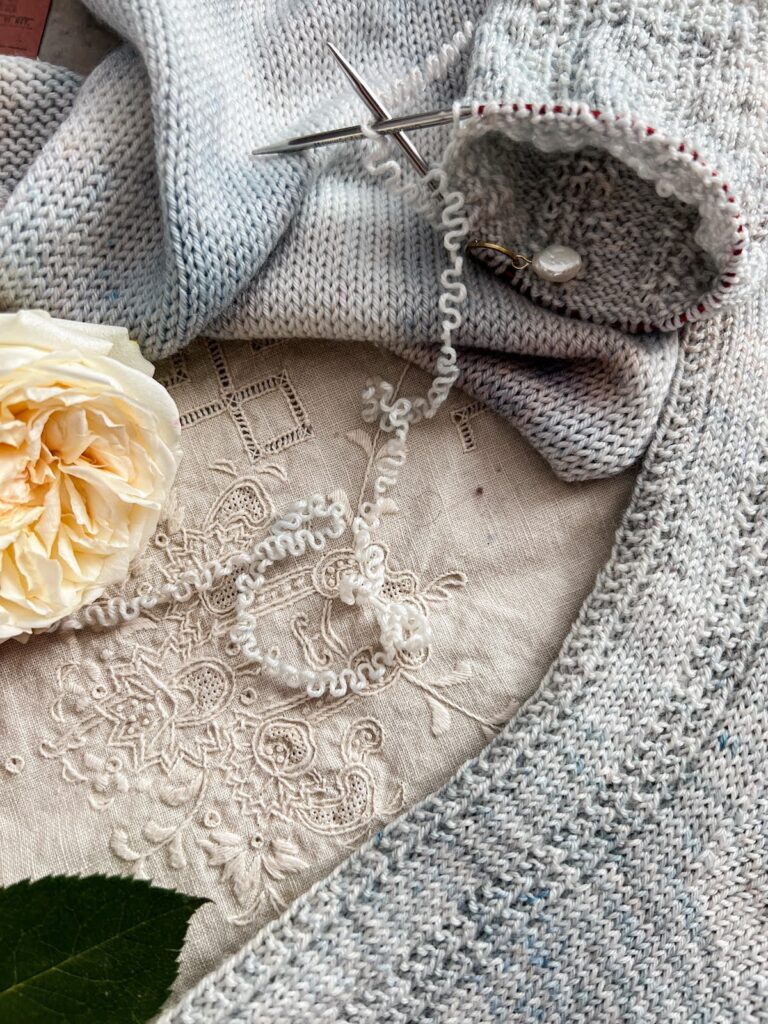
How to Use a Sock Blank
To use a sock blank, you can follow a few different processes. Let’s cover them in order from easiest to most complicated.
Method 1: The Easiest Way to Use a Sock Blank
The easiest way to use a sock blank is to find the tail end of the blank, unpick the cast-off edge, cast on using that tail of yarn, and start knitting. You can pull directly from the sock blank and knit as you pull. No muss, no fuss.
Method 2: A Trick for Better-Matched Socks
If you have a single-stranded sock blank and you’d like to make more symmetrical socks that are less likely to exhibit pooling, you can unravel half the blank and ball it up as you’re working. When you get to the midpoint, cut or break the yarn and ball up the second half as you did with the first half. Then, when you’re knitting your socks, alternate yarns from the two different balls.
Method 3: A Way to Smooth Out the Crimped Yarn
Now, if you really care about knitting with smooth yarn, there’s a technique you can use to smooth it. You’re going to have to wet down your yarn from the sock blank before working with it. For me, this is way more work than it’s worth, but it isn’t for others.
To do this, simply unwind the sock yarn around a long widget (a niddy-noddy, a long pipe with two broad ends, the back of a chair, or your hand and elbow along your forearm will all work). When you finish that task, tie a few spare strands of yarn at regular intervals to prevent the yarn from tangling. Submerge it in lukewarm water and let it soak. Gently squeeze out the excess water (don’t wring it!) and hang it to dry. You can put a light weight (like another hanger) at the bottom of the loops of yarn to add extra straightening power.
Once the yarn has dried, you can wind it up into a ball, and it’ll be much smoother.
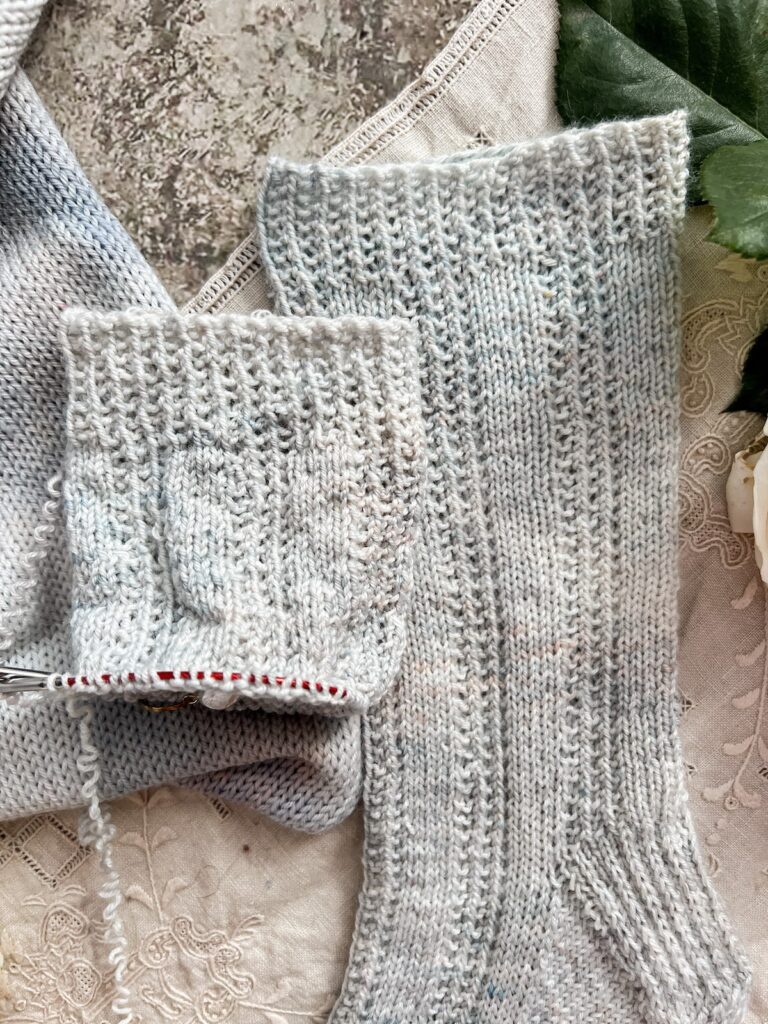
Suggestions for Improving your Knitting Experience
The process of knitting from a sock blank is relatively straightforward, but there are a few little tips that can make it even easier. Here are my top three tips for success when knitting with a sock blank.
Block Your Socks When You’re Done
Your socks knit from a sock blank are going to be kind of ugly and lumpy when you finish them. That’s because you’ve used yarn that has been knit up already once before. To smooth them out, give them a good soak, gently squeeze out the excess water, and lay them flat to dry.
Remember: you do not necessarily need sock blockers to block your socks. Blocking is much more about the process of soaking so the yarn can relax. If you lay them flat in a shape that is approximately what a sock should look like, they’ll dry just fine.
Make Sure You’re Pulling from the Right End
Sock blanks have two ends. When you pull from the cast-off edge, the yarn will unravel easily. If you pull from the cast-on edge, though, the yarn will snag at the end of each round or row, and you’ll have to untangle it.
If you find your yarn is snagging, you’ve started at the wrong end. You can snip that little tail of yarn if it will bother you, or just leave it dangling and start again at the other end.
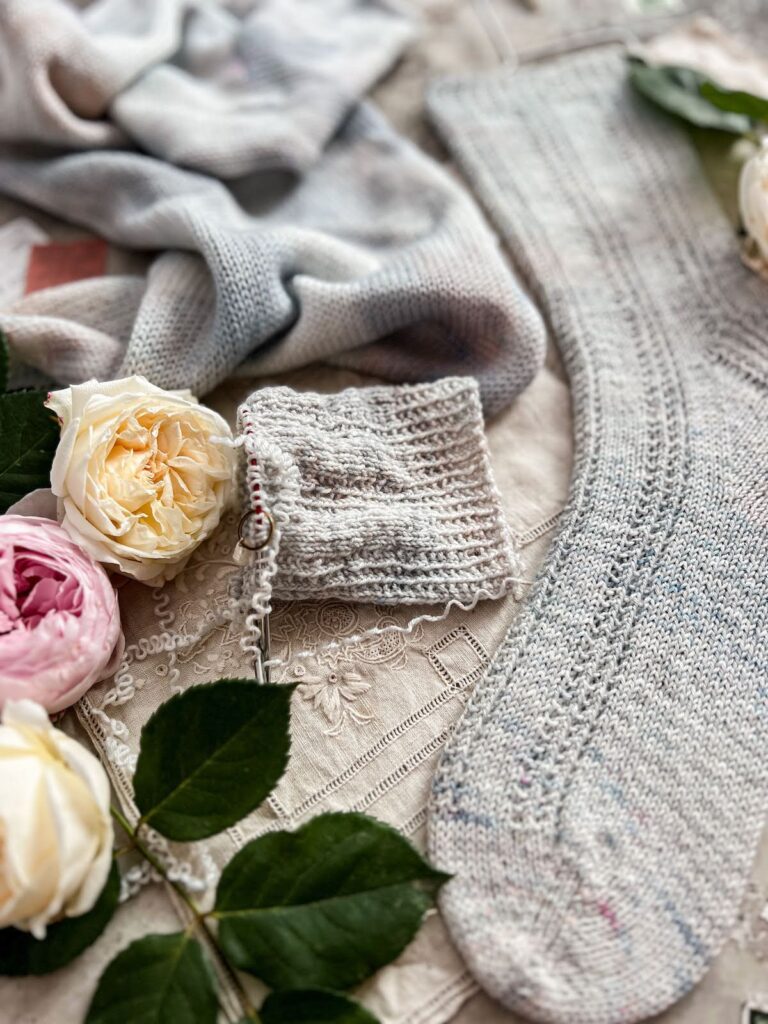
When Using a Double Stranded Blank, Wind Into Two Balls
If you’re using a double-stranded blank, you’ll probably want to wind it into two balls before you start working. If you try to knit directly from the blank, you’ll end up using one strand and having the other turn into a tangled mess. You can wind the second strand into a ball as you work, but that’ll really slow down your knitting process.
And there you have it! Armed with this new information, you are ready to go out into the world and your own pair of socks from a sock blank. If you have other tips and tricks, I’d love to hear from you in the comments.
Let’s stay connected!
Join my newsletter for 30% off all new releases, regular updates with helpful tips and tricks, first crack at registration for upcoming workshops, exclusive discounts, and more.
Join the A Bee In The Bonnet Facebook Group to participate in knitalongs and other fun community events
Come hang out with me on the A Bee In The Bonnet TikTok
Follow along on the A Bee In The Bonnet Instagram
Get inspired via the A Bee In The Bonnet Pinterest

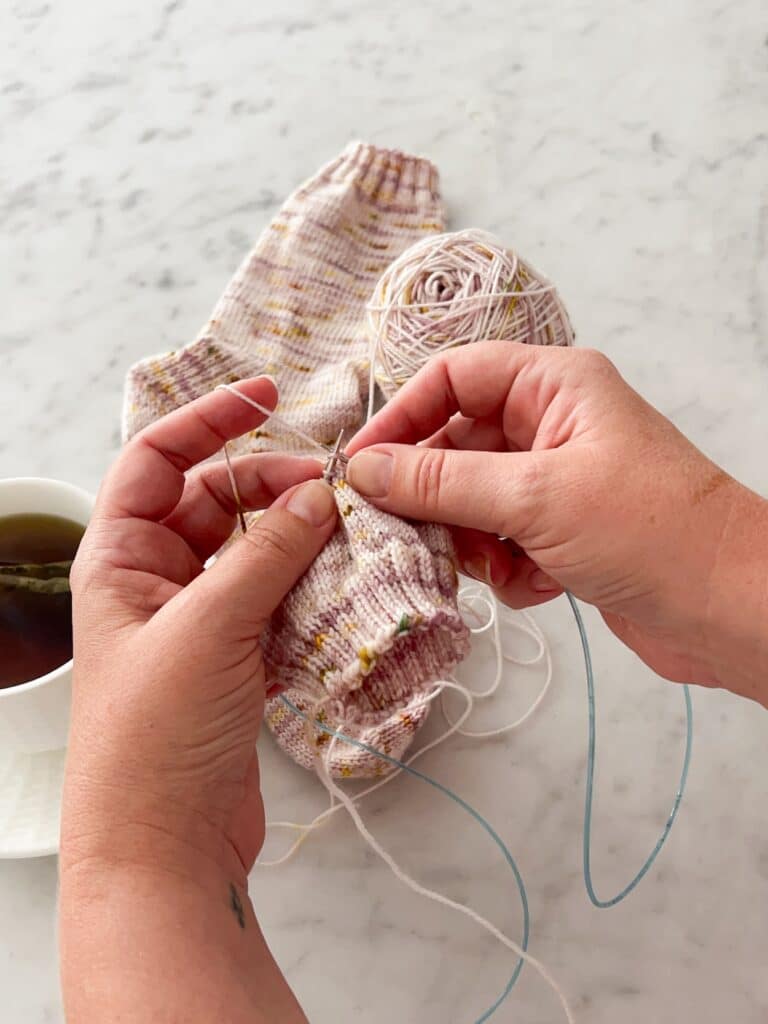
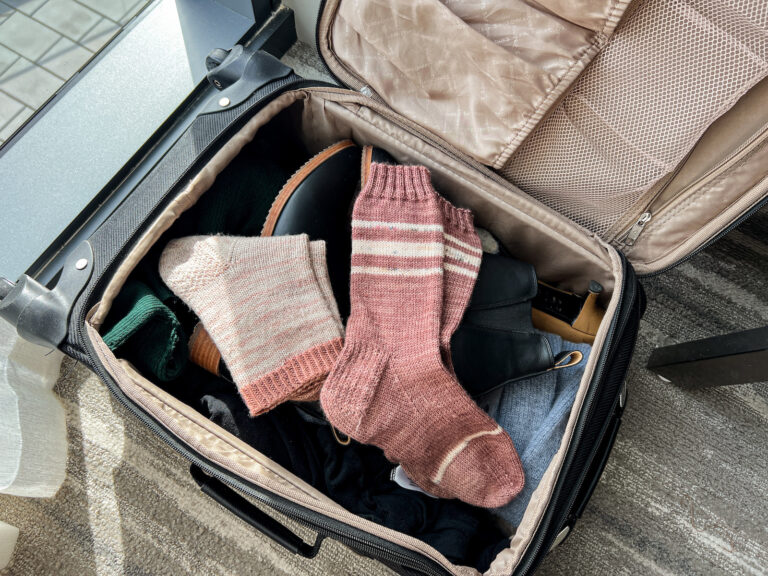
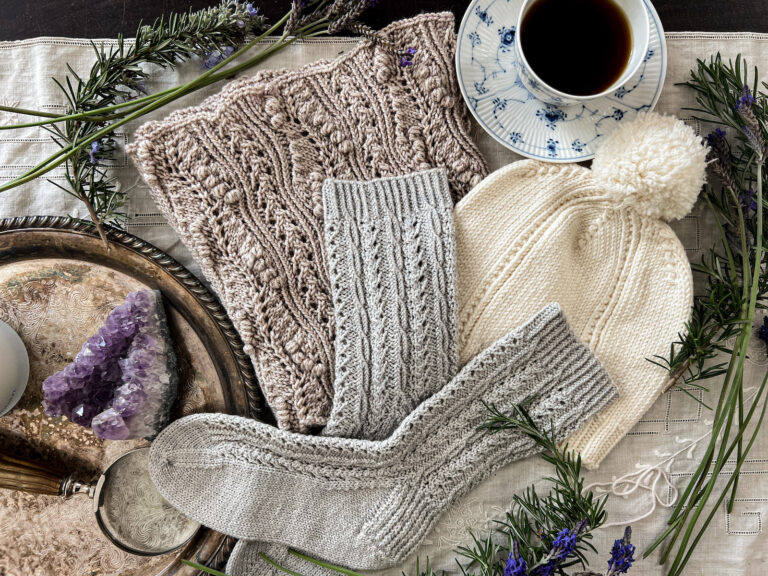
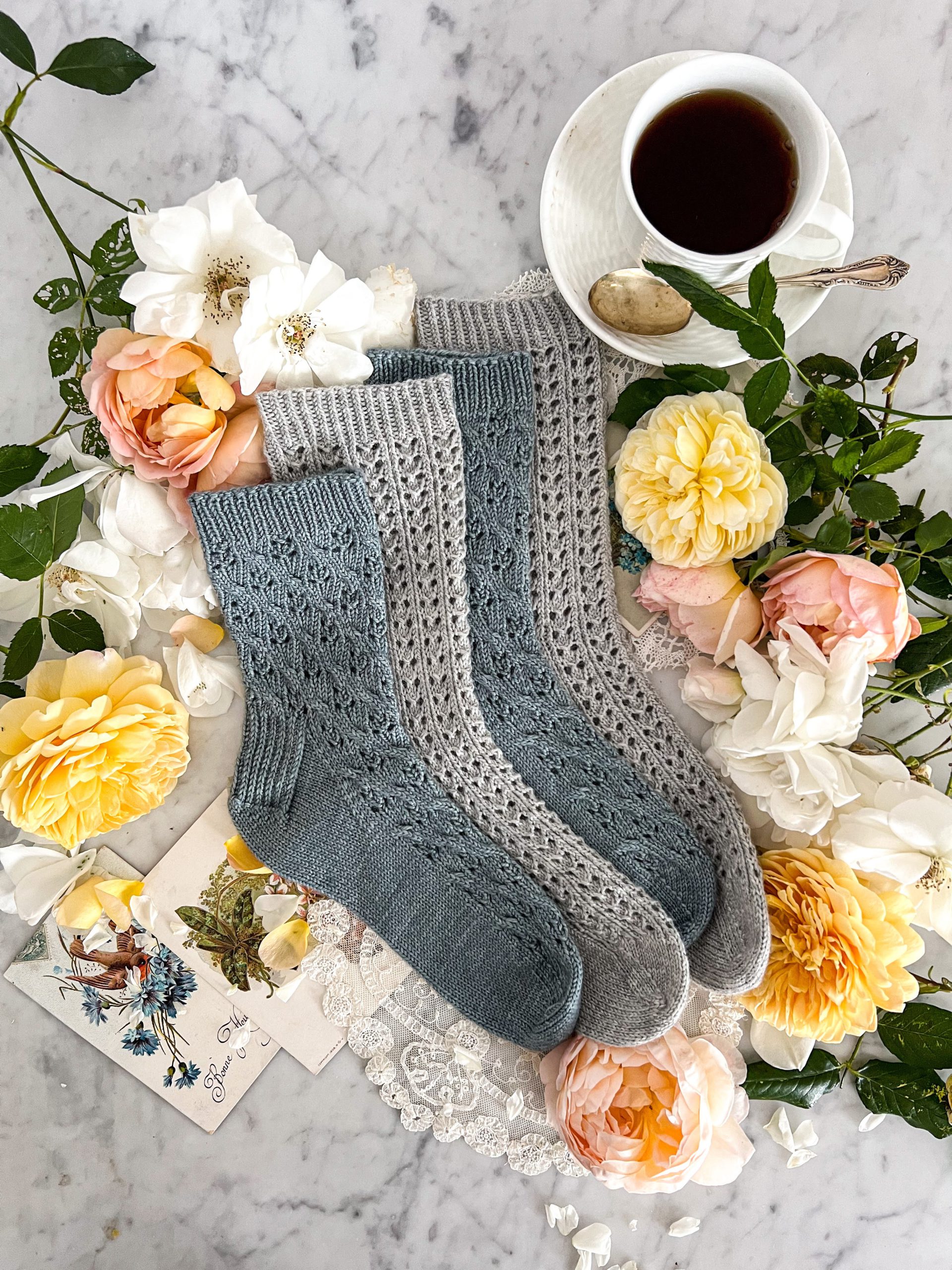

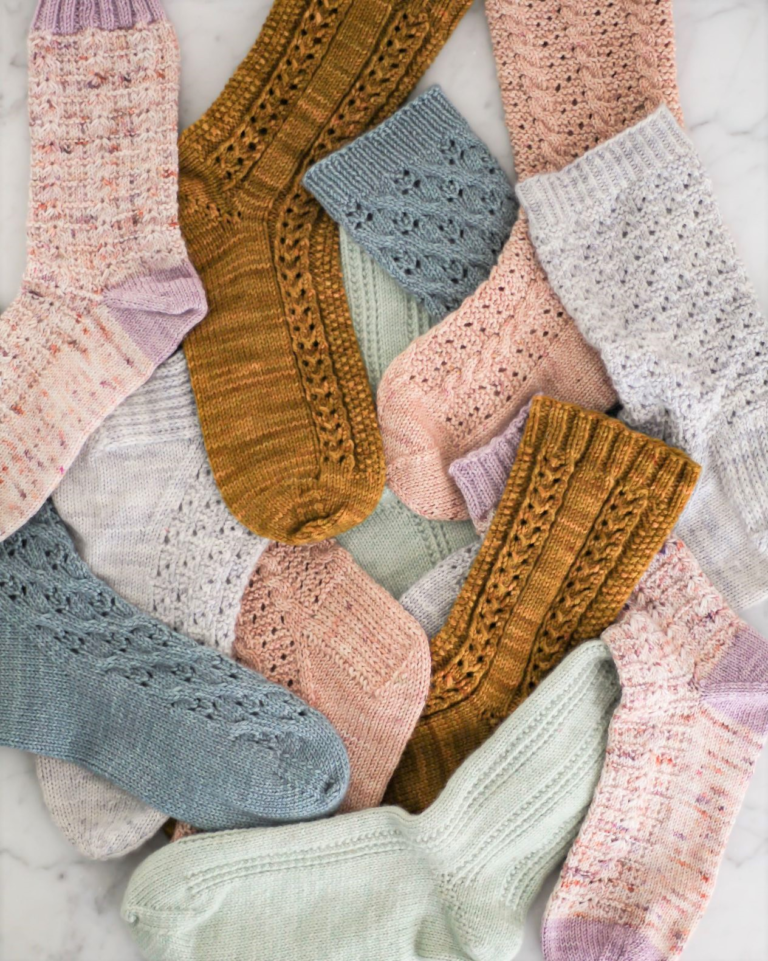
Double stranded sock blanks were made for 2 at a time toe-up sock knitting, marriage made in heaven
Perfect if that’s your preferred sock-knitting technique!
Thank you! I have been curious about knitting from a blank but never tried it. It’s good to hear from someone who had with their honest opinion. Think I might give it a try!
Feel free to pop in with updates if you decide to give it a try. I’d love to hear how it goes for you.
I will read when I return, BUT – I have dreamed for years of being able to purchase a pre-knitted tube – to which I merely complete the top to desired height, toe and heel! This seems close, but not the same (unless you can do so on the blank, but diameters of tubes would change with size . . . this . . fascinating! T hanks
Ah, this definitely won’t fit that goal, but you probably could get a sock-knitting machine that would work it at a small enough diameter!
Wait – the taralynn dyed yarn – only comes in ~$300 baskets?
There is no contact link for questions, so I do not know if other versions are available -??
thanks!
Hi there! Taralynn’s yarn comes in lots of different forms, but it sells out quickly. If you sign up for her newsletter, you’ll get updates letting you know when the next batch hits the shop.